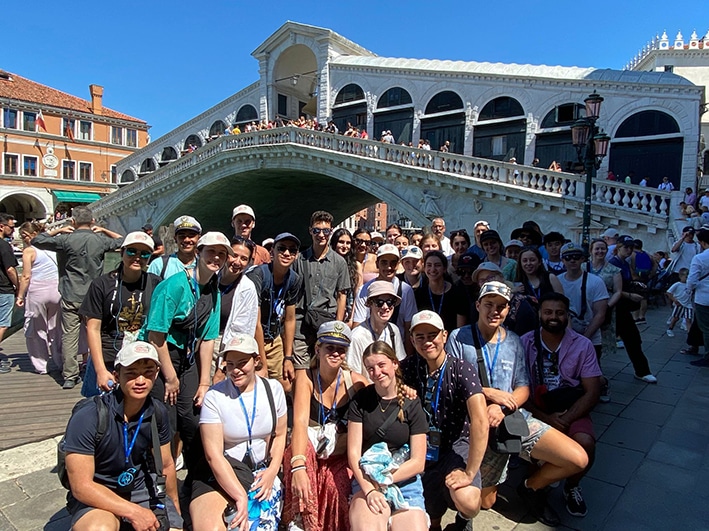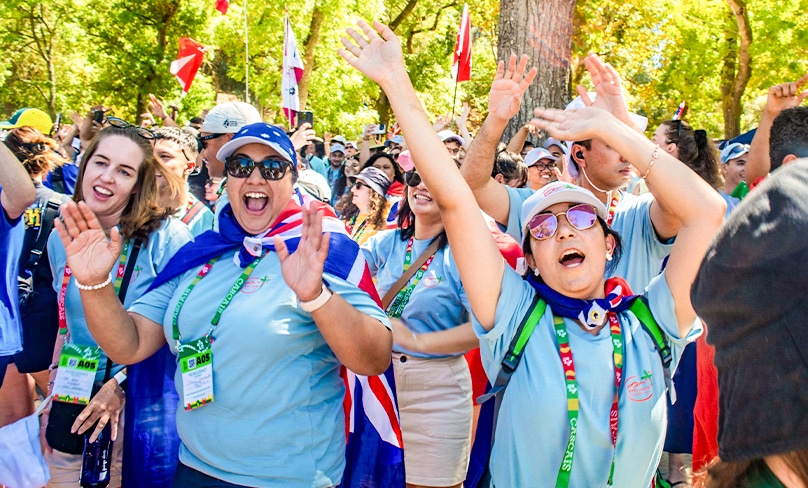
A long-overdue operation put paid to my hopes to attend World Youth Day in Lisbon. Despite this, I kept abreast of the event, especially pilgrims’ engagement in and response to the core activities.
Social media was awash with photographs and posts depicting excited and joyful pilgrims. We know of course that World Youth Day also works at a deeper level, which is quite distinct from the highly contagious emotional energy that characterises the international gathering.
This was borne out in a text I received from a teacher pilgrim. Having attended catechesis with Bishop Robert Barron, and the Stations of the Cross, the teacher wrote:
“I just wanted to thank you so much for allowing me to be part of this pilgrimage. I won’t lie, it’s been a struggle (but no more than I expected) but it has been an amazing spirit-filled journey.
“I am reminded of the great joy I experience as I watch our students experience the Risen Christ alive in our world. I must say on a personal level that it’s been a mega faith boost for me at a time when I’ve really needed it.
“Anthony, the Holy Spirit tapped me on the shoulder today at catechesis and my heart is brimming with the love of Christ. He really is alive—the light of the world!!!”
This teacher pilgrim had a powerful epiphany, where the sense of encountering and experiencing the transcendent is palpable.
These “God moments” are common for World Youth Day pilgrims, not always in the spectacle of the large-scale events, however.
Rather, they tend to be discerned during the quieter moments of liturgy, prayer, adoration and reflection. Or in response to the provocations of catechesis.
World Youth Day nurtures an environment which is conducive to “God moments,” integrates faith and life and helps promote religious socialisation and plausibility.

It is a vivid expression of the universal church, where unity and fellowship are fostered and where people are enriched by the differences of culture and language. For many, the international gathering is their first and only experience of this “unity-in-diversity” which is the Catholic Church.
Pilgrims have now made their way back to different parts of the world. 3,000 Australians are among them. Through its parishes, schools, agencies, groups and movements, the church can complement and consolidate the experience of the Lisbon World Youth Day and take forward the vision of the “new evangelisation.”
While World Youth Day is not the panacea for all religious nominalism, many of those returning may well have been animated in their desire to practice and share their faith.
My question is, “Are we ready to support and accompany them?” If we are not, we have missed a golden opportunity.
Some years ago, during my doctoral research, an adult pilgrim, David, raised a similar concern.
“It is all very well to send people to World Youth Day, but what do we have in place for them when they come back?” he asked.
“If the focus is just on sending them, then that in itself has a limited shelf life. If there’s not a community for them to join, not somewhere where they can continue to grow, to be nurtured in their faith, then what’s the point?”
Our returning pilgrims will be physically drained, if not exhausted. Very quickly, they will need to reconnect with family and friends and return to work and study. There will be long “to-do lists.”
With this, there may be a temptation to “press pause” with activities that engage them in the life of the church.
I would caution against this. Despite their tiredness, our pilgrims will remain buoyed by the experience they have just had. A “pause” risks becoming a vacuum of inactivity. Instead, we should organise “re-connect” gatherings, not dissimilar to World Youth Day, to enable pilgrims to share, reflect upon and process their experiences.
